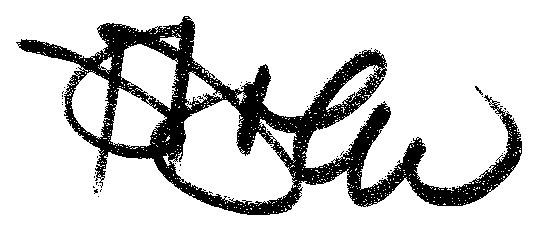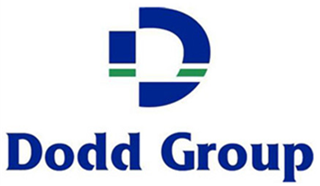Title Page
-
Site conducted
-
Job Number
-
Site:
-
Location
-
Date
-
Prepared by
Section 1: Method Statement
-
• All operatives are to receive site induction by the named persons and have in their possession trade specific CSCS/ECS HSE cards before commencement of any works. Operatives are to familiarise themselves with the emergency procedures, i.e. first aid, fire exits and fire muster points, etc.
-
• Ensure operatives are aware of any specific site rules and inducted on to site by the designated responsible person.
-
• Operatives are to be made aware of any manual handling requirements and the size and weights of all equipment to be installed to ensure safe lifting techniques are used.
-
• Personal Protective Equipment is to be worn as specified in the working activity section. Steel toe cap safety shoes, hard hat, Hi-Viz vest, gloves and glasses are to be worn as a minimum and any other PPE as directed by the main contractor
-
• All installation equipment is to be delivered to site by the supplier and be ready for the installation activity.
-
• All work equipment typically battery powered 110V hand tools are maintained as per the manufacturers instructions with records kept. Any portable electrical appliances will be subject to a yearly PAT testing program as a minimum.
-
• All access equipment is inspected by a competent person monthly with records kept. Access equipment is then to be visually inspected before and after use by the designated responsible person. Operatives IPAF and PASMA trained. Scaff tags applied to podiums on a weekly basis and weekly MEWP inspections required as necessary.
-
• Ensure that information relating to the structure of the building and the building material is obtained before commencement of any works. If any suspected or confirmed asbestos containing material is found the operative is to stop work immediately and seek advice from their Line Manager.
-
• Check relevant work areas for buried hazards such as electrical cables.
-
• Stepladders will be allowed on a “permit to use” basis only. These will be required for work in the risers as they are too small for podium use and when the building is coming to a visit state.
-
• All debris is to be cleared at the end of each relevant day into the provided site skips.
-
• Safe access and egress via designated pedestrian routes whilst onsite using red marked doorways.
-
• All Environmental considerations and Emergency arrangements will have been identified by the named persons below.
-
• Parking to be provided in designated areas
-
Signed:
Scope of Works
-
undefined
Emergency Contacts
-
Please ensure that any on site incidents are notified to site representative and Vietec as soon as possible.
-
The following Emergency Contact Numbers are available in case of Accident or Emergency onsite
Emergency Contacts
-
Contact
-
Company
-
Position
-
Tel. Number
Acceptance
-
I have read and understood the RAMS issued and by signing this document agree to adhere to its content.
Confirmation
-
Signature
-
Date
Section 2: Risk Assessments
-
Employees carrying out a task for or on behalf of Vietec Limited or in partnership must view and understand the relevant task specific Risk Assessment prior to commencement of work on site.
If an Employees’ task has not been adequately risk assessed for significantly hazards, then the employee must contact the relevant project manager for an appropriate Risk Assessment to be provided.
The following task specific Risk Assessments relates directly to a specific activity that a Vietec Operative will have to undertake whilst working on a client’s premises.
Task Specific Risk Assessments Explained
The activity or task performed by the operative is listed in the left-hand column of the task specific Risk Assessments and the hazards associated with the particular task are listed in the adjoining column. A hazard can be defined as something with the potential to cause harm.
The next Column in the Risk Assessment details those who may be affected by the hazard and include.
E = Employee of Vietec
C = Contractor
YP = Young Persons
V = Visitors
M = members of public
The Risk of the Hazard is the combination of the Likelihood of a hazardous event occurring and the Severity of the event. Therefore, in order to assess the risk of the individual hazards involved in the activity a simple calculation can be made.
Risk = Likelihood x Severity
A 5 x 5 matrix system to calculate the risk rating is used.
Likelihood of Harm: (L) Severity of Harm: (S)
1 = Very Unlikely 1 = Insignificant – no time lost
2 = Unlikely 2 = Minor
3 = Fairly Likely 3 = Moderate – up to 3 days lost
4 = Likely 4 = Major – 3 days plus lost
5 = Very Likely 5 = Catastrophic – death
Scores of 1-4 are Acceptable
Scores of 5-9 are Tolerable
Scores of 10-25 are unacceptable
Section 3: Task Specific Risk Assessment
Task Specific Risk Assesment
-
Hazard - Falling Objects
-
-
Hazard - Falls from Height - Working on Step Ladders
-
-
Hazard - Moving Plant
-
-
Hazard - Asbestos
-
-
Hazard - Dust Inhalation
-
-
Hazard - Slips, Trips & Falls
-
-
Hazard - Other Contractors
-
-
Hazard - Excavations
-
-
Hazard - Falls from Height - Working with Powered Access
-
-
Hazard - H & S Responsabilities for Operatives
-
Section 4: Working on Step Ladders
-
Are working on Step Ladders required?
-
1.Before undertaking any work at height, a risk assessment must be completed.
To justify the use of Steps, the risk assessment must identify that other forms of access equipment are not suitable due to environmental conditions such as floor to ceiling height, space constraints or restrictions.
2.Before use of step can commence you should compete a visual check on the condition of the step if they are deemed to be faulty you must stop the works and seek advice.
3.Steps must be fully open and on firm ground you must not work on the top 3 rungs of the steps and have 3 points of contact.
4.Steps with hand rails and a platform maybe the preferred option where the uses of hand tools are required.
5.Before use the engineer that they are wearing the relevant PPE as instructed in their site RAMS
Vietec expect that all staff and contractors keep their steps in good condition.
Section 5: Working on Ladders
-
Is working on Ladders required?
-
1.Before undertaking any work at height, a risk assessment must be completed.
To justify the use of a ladder, the risk assessment must identify that other forms of access equipment are not suitable due to environmental conditions such as floor to ceiling height, space constraints or restrictions.
2.Only light work of a short duration with a low risk of falling, should be carried out from a ladder
3.Ladders should be set on a firm base and lean at the correct angle (one unit out to four units up, or 75 degrees is recommended)
4.Ladders should be secured near the top and extend at least 1m above the landing point, unless a separate handhold is provided. If the ladder can’t be secured at the top, it may be possible to secure it lower down
5.Ensure footwear is free from excessive mud or grease before you climb up the ladder
When climbing up or down, use both hands on the stiles. Always face the ladder
6.Do not over-reach from a ladder or step ladder. Move it if you cannot reach.
Tools and materials must not be carried up ladders. A tool belt should be used
Where a handhold cannot be maintained for anything other than a brief moment, other fall prevention measures are required
7.Do not stand or work on the top three steps of a stepladder (Including a step forming the very top of the stepladder) unless there is a suitable handhold
Working on Podiums
8.Ladders are a last resort to works if the use of ladders is required then this must be reported to Vietec Vie an Email to the line manager and Rebecca, a suitable risk assessment must be done and confirmed by all parties.
Section 6: Working on podium tower/scaffolding
-
Are working on Podium/Scaffolding required?
-
1.Check all components are available and operational
2. Inspect the unit components for signs of damage or incorrect functioning prior to use.
Damaged or incorrect components (or components showing signs of excessive wear) must not be used and returned to your local supplier. Castors and adjustable legs should be periodically lubricated to keep them free running.
3. Unit is designed for internal use only on flat level surfaces. Check that the ground is capable of supporting the weight of the Podium Step and equipment
4. The safe working load of the Podium Step is 115 kg (one man).
5. Castors must be locked when unit is in use.
6. Ensure that the platform is free of persons and equipment, and that brake locks are off prior to movement. Beware of soft or uneven ground and overhead obstructions.
7. Mobile access unit must only be moved by pushing at the base.
8. Always beware of live electrical apparatus, cables or moving parts of machinery.
9. To prevent accidental injury ensure safe positioning of hands and fingers when assembling and dismantling.
10. Ensure that telescopic guardrail is free from contaminants and lubricated at regular intervals
11. Never jump onto platforms. Ensure platform is debris free.
12. Check that Castor Locking Bolt (to frame tube) has not loosened through use of Podium Step. Tighten bolt, if necessary, by turning 19mm bolt clockwise.
13. Ensure guardrails and gates are locked and secure when platform is in use.14. Podium Step units are not designed to allow them to be lifted or suspended.
15. Never use this equipment if you are ill, feeling tired, or under the influence of alcohol or drugs.
16. Wear practical, protective clothing, gloves and footwear.
17. Avoid loose garments and jewellery that could catch in moving parts and tie back long hair.
18. Ensure the work area is well lit and ventilated, if in doubt, ask about lighting and ventilation equipment from your local supplier.
19. Make sure that anyone in the immediate work area is
warned of what you are doing.
20. Do not use boxes, ladders or other such means to gain additional height at the platform.
Vietec insist that anyone using Podiums should have the relevant certification (PASMS)
And all works to be carried out in accordance to the RAMS.
Section 7: Working on/with MEWPS
-
Are working on MEWPs required?
-
Introduction
Types of MEWPs generally in use are: Scissor lift; telescopic boom articulated boom
Operator Training and Certification
All MEWP operators should have attended a recognised operator-training course (IPAF) On successful completion they will receive a certificate, card or ‘licence’, which clearly identifies the bearer and lists the categories of MEWP they are trained to operate. This document can be updated as the operator undergoes further training. You should
check the expiry date of the training licence or card. Operators using material handling attachments should have received additional training in accordance with the attachment manufacturer’s recommendations.
Maintenance
The trained operator is responsible for carrying out a basic daily/pre-use inspection and function check and records of these checks should be kept. The operator should also be fully aware of the procedure you expect to be followed should they identify a fault with the MEWP, i.e. isolate the controls, tag the machine and report the defect to the person in control. You should request a copy of the maintenance records as evidence that the MEWP and any related materials handling attachments that are going to be used on your site have been properly maintained.
Familiarisation
Any trained operator should be given a period of familiarisation on the machine to be used delivered by a competent person.
This should include:
Safety warnings and devices, emergency lowering procedures, set up requirements including wheels and outriggers.
Machine specific, Controls, SWL or load charts, maximum speed and operating slopes and limiting wind speeds.
The maximum number of people that can be carried.
It is important that you allow enough time for your operator to check, inspect, perform function tests and familiarise themselves with every new MEWP.
All familiarisations should be recorded.
Control measures
1.Due to the high risk nature of working at height, adequate Supervision must be in place throughout the task to ensure that safe standards are maintained and that safe processes are followed.
2.Only fully trained and certified (IPAF) operatives will be allowed to operate mobile access equipment. Pre-use inspections must be carried out before any equipment is used.
3. All staff working within a MEWP basket must ensure that they are wearing the appropriate PPE before starting works – i.e. Harnesses and mandatory PPE as required in the appropriate risk assessment.
4.The MEWP must have all stabilisers, handrails, toe boards and electronic guards in place and fully functional before works will be allowed to commence. The correct working platform must be used for the appropriate works being carried out.
5. Access and egress to the basket will only be at ground level. The basket is not to be used for access and egress at height.
6.MEWP’s will only be operated by suitably trained (IPAF) and competent operatives. The certification held by the operative must match the MEWP being operated. MEWP’s will only be operated within the safe working parameters for the particular machine and as set out in the operation instruction manual.
7.Operators must ensure ground conditions are sound and firm prior to commencing works. If not, then operators and supervisors must consider other means of access or postponing the task.
8.Machines must be protected from potential vehicle access or collision within the site if weather conditions present a risk, i.e. rain causing very slippery surfaces or high winds, then cease task and await the correct conditions
Do not operate MEWP’s in strong winds or weather conditions that present a risk of the MEWP falling over.
9.An exclusion zone must be set up around the MEWP prior to works commencing. Operatives must ensure that all tools taken up a MEWP are tethered so as not to fall if the operatives lose grip of the tools.
10.Where the MEWP is to be used in an area with vehicle and/or pedestrian movements, the MEWP must be set up within an exclusion zone/protected work area to stop vehicles striking it. The work area will have a full time banksman to ensure vehicles and pedestrians are excluded from the work area.
11.Competent IPAF-trained and certified operatives will be the only staff allowed to operate MEWPs. These operatives will ensure that pre-use checks are completed before use. Operatives must ensure that any damage is reported immediately. If in doubt, operatives must not use the equipment.
12.All access to and from the work area are to be safe and protected.
Access and egress to the basket will only be at ground level. The basket is not to be used for access and egress at height.
Emergency access to the MEWP must be maintained and understood at all times, including the ability to rescue an operative who may be injured or unconscious.
1: Rescue Plan
-
MEWP Details - Manufacturer/Model/ID
-
Normal and auxiliary control systems built into a mobile elevating work platform (MEWP) will allow the operator to bring the platform of the machine safely to ground level under controlled conditions. It is extremely unusual not to be able to lower the platform using these controls or for all of these systems to fail. The following is a rescue plan for people who work at height using the proposed MEWP.
-
Location of use
-
Date
-
-
This rescue plan should be brought to the notice of those exposed to the risk of working at height and those supervising and managing the same work at height.
-
Name
2. Consideration for mid air rescue
-
A mid-air, platform to platform rescue should only be considered in exceptional circumstances and only after:
• All normal and auxiliary lowering procedures have been attempted and these are unable to lower the platform.
• Site management have contacted the competent and authorised service engineer listed in the rescue plan, to report failure of normal and auxiliary lowering systems and request engineering assistance.
If after inspection by the competent engineering assistance, it is not possible to affect a timely repair to allow the machine to be brought to the ground safely, senior site management should be contacted for permission to carry out mid-air rescue.
Or
Where the competent engineering assistance is not readily available and an immediate risk exists to the health and safety of any of the occupants from remaining in the elevated basket until an engineer can attend, then senior site management should be contacted for permission to carry out mid-air rescue. -
A/ Rescue using another MEWP should only be performed once a site-specific risk assessment has been carried out and a specific plan has been documented and approved by senior management.
B/ The rescue machine must be positioned so as to enable the rescue procedure to be carried out without compromising the safety of any personnel involved in the rescue procedure.
C/ The platforms of both machines must be adjacent to each other with a minimal gap between them, unless exceptional circumstances mean this is not possible. (Where this is not possible, the circumstances shall be recorded onto the risk assessment form.)
D/ Where reasonably practicable, precautions should be taken to prevent inadvertent movement of both platforms during the transfer.
E/ The person being rescued (transferred from basket to basket) should wear a full body harness with an adjustable lanyard – the lanyard should be attached to the anchor point on the rescue machine before transfer takes place.
F/ Care must be taken not to overload the rescue machine during transfer. This may mean making more than one journey to complete the rescue.
Further guidance on mid-air rescue can be found in ISO 18893:2014 - 6.1.2.8.



























